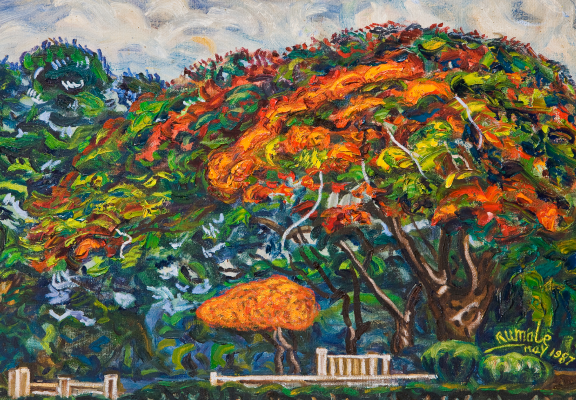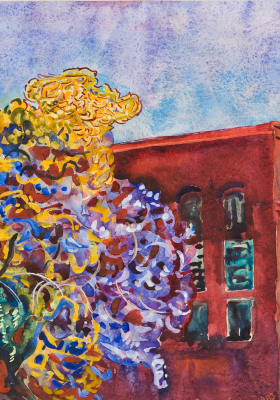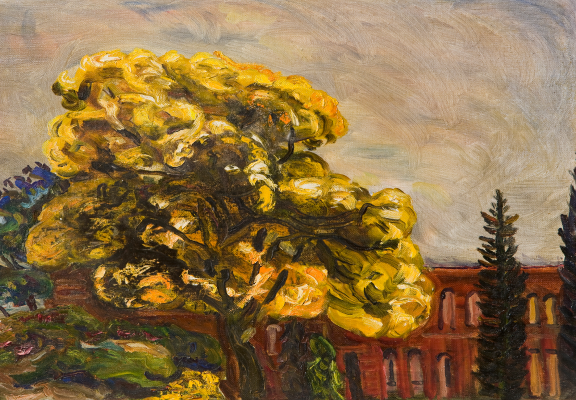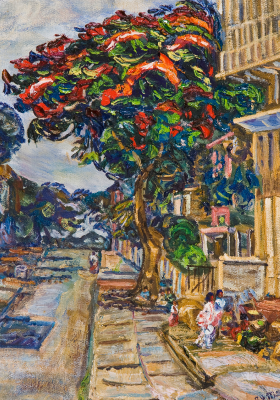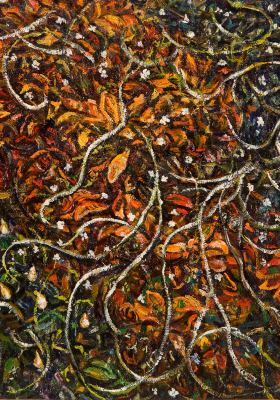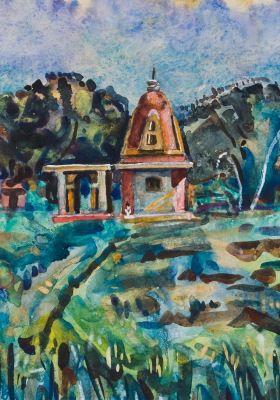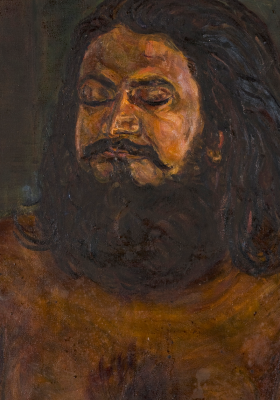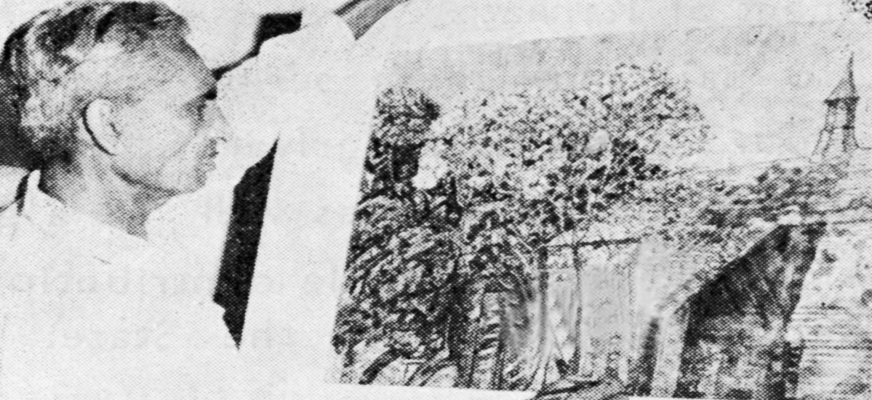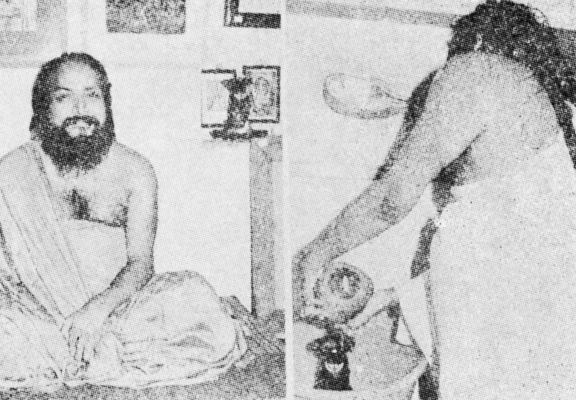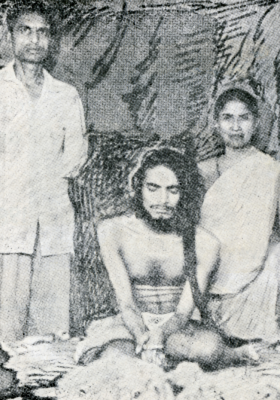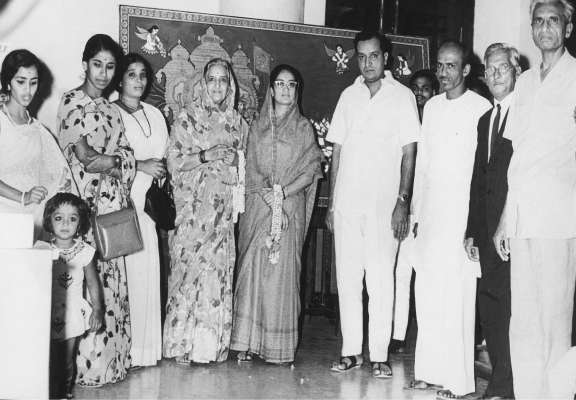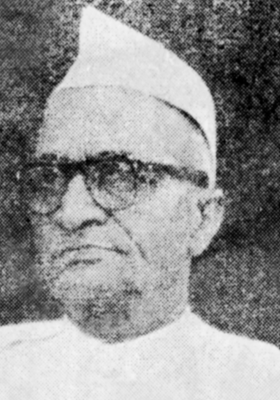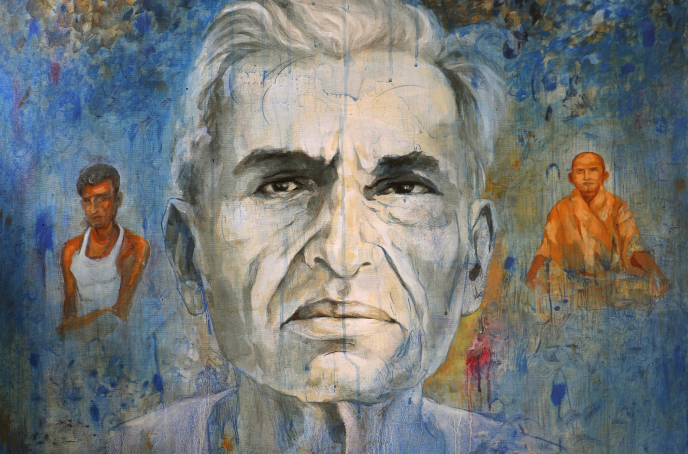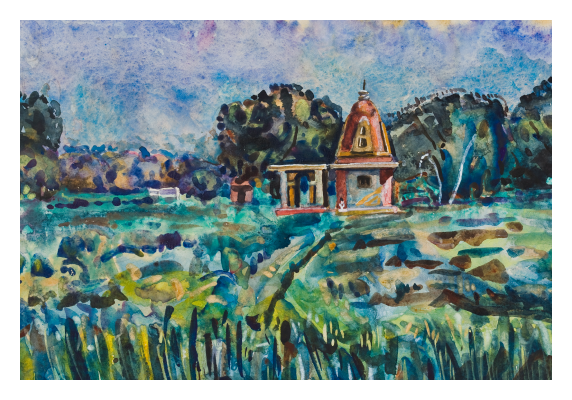Themes
Bengaluru is home to flowering trees from all over the world. The city’s salubrious
climate, and centuries of local and international botanical interventions have ensured
what is locally referred to as a “ritusimhara” – a year-long sequential blooming of
flowering trees.
Rumale Chennabasaviah, an ardent nature-lover, sought to capture the city’s natural beauty in his
paintings. He was so captivated and inspired by the city’s setting of the diverse flora
and blossoms, that for nearly three decades, he immersed himself in representing these
visages in his own signature style of paintings. During this time, Rumale also
painted, in his inimitable style, important landscapes and landmarks of the state of
Karnataka – the first, and probably also the only artist to cover such a wide collage of
landmarks.
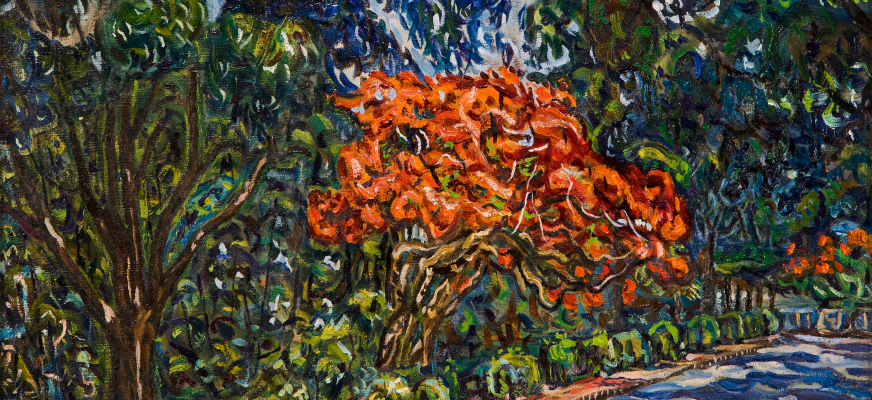
Medium
Rumale took up painting as a full-time activity in 1962, more than three decades after
his initial training. He worked on both water colour and oil mediums and mastered the
difficult British watercolour technique. It was his preferred medium.
He consciously chose to be a ‘plein air' artist. So, nature in all its glory and fury,
was his studio. He always painted ‘on the spot’ at the same chosen time of day, till the
completion of the painting.
He was one of the few artists in the world who created works of art from nature in larger dimensions
rarely attempted even by the renowned landscapers. Big or small, his mastery of the
medium is obvious and one just cannot miss the freshness and vibrancy of colours in his
works.
Style
Although Rumale has often been referred to as the Van Gogh of India, he had a unique signature style of his own - some call it neo-impressionist, some others have called it romantic modernism. In essence, Rumale used colour to express emotion and mood. The golden yellow shower of the Indian Laburnum, the rich orange of the Flame of the Forest, the African Tulip, and the cluster of drooping pink Cassia Javanica, the soothing mauve of Jacaranda, the bright yellow Gulmohur and the fragrant Frangipani lining Bengaluru’s streets were for him a source of admiration and wonder. He very ably captured the floral essence of Bengaluru’s, “ritusimhara” – i.e. the serial flowering of trees all through the year - on paper and canvas, in acid yellows, hot reds, cool blues and deep purples.
Technique
Rumale was largely a self-taught artist from Karnataka who was initially encouraged by his brother,
Shri Chennarudraiah. He experimented and evolved over time, developing his technique,
painting by painting, building upon the brief but solid grounding that his teachers gave
in the late 1920s at Kala Mandir and Chamarajendra Technical Institute (CTI). He infused
his paintings with a rare liveliness, imparting energy and sparkle that could be said to
be very uniquely Rumale. In that sense, his personal and authentic approach to
portraying floral patterns and landscapes distinguished him from traditional schools of
painting at the time, making him more of a ‘break-away’ artist in the
post-impressionistic mould.

